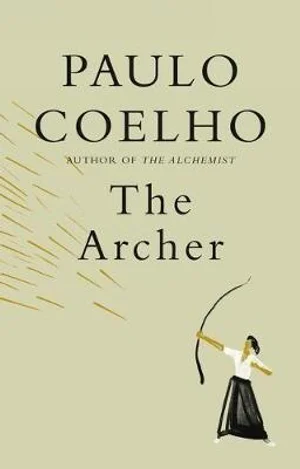 Reviewed by Seth Johnson
Reviewed by Seth Johnson
The Archer
Paulo Coelho
Penguin Random House
10th November 2020, ISBN: 9780593318270, 160 pages
To my shame as a reader, The Archer is the first book I’ve read by Paulo Coelho. For years, I’ve seen his books in stores or online lists, especially his 1988 novel The Alchemist. Coelho sold over 35 million copies of The Alchemist in 35 different languages and has published over 15 other books, though none have captured readers the same way. Likely, The Archer will follow a similar path, but the story is worth a read.
Published in November 2020, the book is best described as a short, allegorical story. The key word: short. The online details say the book is 160 pages, but that statistic is misleading. Full-page illustrations cut the number of actual text pages. Also, the book is formatted as paragraph-sized pieces of advice with a large font and ample black space.
I bought The Archer at a brick and mortar store and flipped through the pages in the aisle. So the length didn’t bother me. But browsing online comments makes it clear that not all readers were aware of the length before buying. Put concretely, I read the book in forty minutes while sipping tea—which slows reading speed.
With that said, I enjoyed The Archer. Beautiful illustrations by Christoph Niemann break up the different sections, and Coelho’s writing is simple and beautiful. He tells about Tetsuya, a master archer turned carpenter who now lives in a village where his talents with a bow and arrow are unknown.
One day, another archer enters the town seeking Tetsuya by name and asking to match his skill against that of Tetsuya, whose fame abroad has yet to fade. After the competition, the village boy who led the visiting archer to Tetsuya asks the carpenter to teach him the way of the archer. Tetsuya replies that all the knowledge needed could be taught on their walk to the village; practicing the art to the point of “necessary precision” is the difficult part.
This part of the story is called the Prologue and fills up 7 pages. The bulk of what remains is Tetsuya’s teachings, catalogued under heading like Allies, The Bow, The Arrow, How to Hold the Bow, How to Draw the Bowstring, The Moment of Release, and Repetition.
In the Epilogue, we return to Tetsuya and the boy as they arrive in the village. The boy asks a few questions including how Tetsuya learned to master the art of archery. Tetsuya relays the story before blessing the boy and sending him off.
The entire Epilogue fits into 4 pages, showing again that most of the story consists of Tetsuya’s lessons, which consist of short paragraphs about the different aspects of archery. But Paulo clearly wants to impart more than archery.
One lesson on Allies reads: Join with those who do their work with enthusiasm, and because you could be useful to them as they are to you, try to understand their tools too and how their skills could be improved. The time has come, therefore, to meet your bow, your arrow, your target, and your way.”
The above 51-word quote is one whole page in the book. Again, saying 160 pages is a bit misleading when most pages are less than 100 words or full-page illustrations.
Regardless of length, fans of Coelho will enjoy the story as with previous works. The Alchemist followed a similar style of providing life advice through a fictional story (from what I’ve read. I still need to cross it off my to read list). But you may also need to be in the right mood for The Archer. The story of Tetsuya is engaging but short. You’ll need to be ready to decipher thoughtful nuggets of advice about life and how to live it.
About the reviewer: Seth Johnson is a senior journalism major at Bob Jones University. He grew up in Indiana and plans to enter print journalism post-graduation. His genres of interest include languages, mystery and historical fiction.